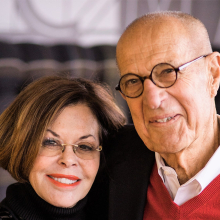WHAT HAPPENS WHEN THE U.S. PRESIDENT THUMBS HIS NOSE AT COURT RULINGS?
It seems clear the Trump administration is fully prepared to defy judicial rulings of the federal courts, including the U.S. Supreme Court, by simply ignoring or refusing to comply with them. A strong belief in the rule of law and respect for the courts as fair and impartial has historically explained compliance with court orders. However, this is not the first time we have faced a constitutional crisis because of an executive refusing to accept judicial decisions.
 In 1832 in the case of Worcester v. Georgia (1832), the Supreme Court overturned the conviction of a missionary living among the Cherokee Nation for refusing to take an oath to obey the laws of Georgia. In an opinion written by Chief Justice John Marshall, the Court held that the Cherokees were an independent legal entity and Georgia laws didn’t apply, ordering his release from custody. However, Georgia’s governor refused and President Andrew Jackson refused to intervene. Jackson supposedly said: “John Marshall has made his decision, now let him enforce it.” The ruling was ignored.
In 1832 in the case of Worcester v. Georgia (1832), the Supreme Court overturned the conviction of a missionary living among the Cherokee Nation for refusing to take an oath to obey the laws of Georgia. In an opinion written by Chief Justice John Marshall, the Court held that the Cherokees were an independent legal entity and Georgia laws didn’t apply, ordering his release from custody. However, Georgia’s governor refused and President Andrew Jackson refused to intervene. Jackson supposedly said: “John Marshall has made his decision, now let him enforce it.” The ruling was ignored.
In 1861, President Abraham Lincoln suspended the writ of habeas corpus for jailed Confederate sympathizers at the start of the Civil War. A Maryland farmer, John Merryman, was arrested for sabotage against Union troops. Chief Justice of the U.S. Supreme Court, Roger Taney, issued a writ of habeas corpus commanding Merryman be produced in court for evidence justifying the arrest. Lincoln’s commanding military general refused to do so or to appear in court for an explanation. Taney appealed to Lincoln who simply ignored the order, while insisting as President, he had the authority to suspend habeas corpus.
In 1957 Arkansas governor, Orval Faubus, refused to comply with Little Rock’s court-approved school desegregation plan to allow a group of African American students to attend the all-white Central High. Faubus dispatched the Arkansas National Guard to the school to block the African American students’ entry when they tried to enroll. The federal court ordered the governor to cease obstructing the desegregation. Faubus reluctantly withdrew the Guard, but by this point, a large mob of white segregationists had assembled outside of Central High to prevent their entry. President Eisenhower ordered the U.S. Army 101st Airborne Division, to Little Rock to allow their entry.
President John F. Kennedy also used executive power to enforce desegregation legal requirements on three separate occasions. The first involved the 1962 case of Meredith v. Fair, where a federal court enjoined state authorities from preventing an African American. admission to the University of Mississippi. Mississippi governor Ross Barnett refused to allow it, going as far as to personally block Meredith’s entrance to a university building. Attorney General Robert Kennedy then sent a large group of U.S. marshals to accompany Meredith, but state officials continued to block his entry, preventing him from registering. Appeals court then found Barnett in contempt of court. Before any action was taken, the situation escalated into a full-fledged riot as a mob of over 2,000 people attacked federal marshals, reporters, photographers, and others. Kennedy dispatched federal troops who allowed Meredith to enroll as the first African American student to do so.
A more recent illustration of this issue happened in July 1974, when President Richard Nixon claimed executive privilege to withhold his recordings from legal investigators. The Supreme Court disagreed, ordering him to hand over the tapes. The court’s ruling was unanimous and unequivocal: “No person, not even the president of the United States, is completely above the law,” justices wrote. The President said he was ‘disappointed’ by the decision but said he would comply. Two weeks after the court’s ruling, Nixon resigned.
What obligation the Executive branch of government has to enforce final court judgments remains a matter of debate. While such an obligation may be seen in the Constitution from Article II’s command that the president “shall take Care that the Laws be faithfully executed” or from the overall constitutional structure, the question has not been resolved. What if the Executive refuses to honor the order?
A holding of contempt of federal court orders is enforced by U.S. marshals. However, the marshals are part of the executive branch, not the judicial branch. The president, who oversees the marshals, can order them not to enforce a contempt order against an executive branch official — although that would violate the law. We all know public confidence in the judiciary is essential to a constitutional democracy. Efficient means of enforcing judicial decisions is, however, a serious issue. While courts may punish disobedience by using the contempt power, this remedy does not by itself guarantee compliance.
An executive or president, who defies judicial decisions violates the Constitutional balance of power of the three branches of government. As expressed by a 1911 Supreme Court decision in Gompers v Buck’s Stove and Range Co.,:
“The power of courts to punish for contempt is a necessary and integral part of the independence of the judiciary and is absolutely essential to the performance of the duties imposed on them by law,” the opinion says. “Without it, they are mere boards of arbitration, whose judgments and decrees would only be advisory.”
